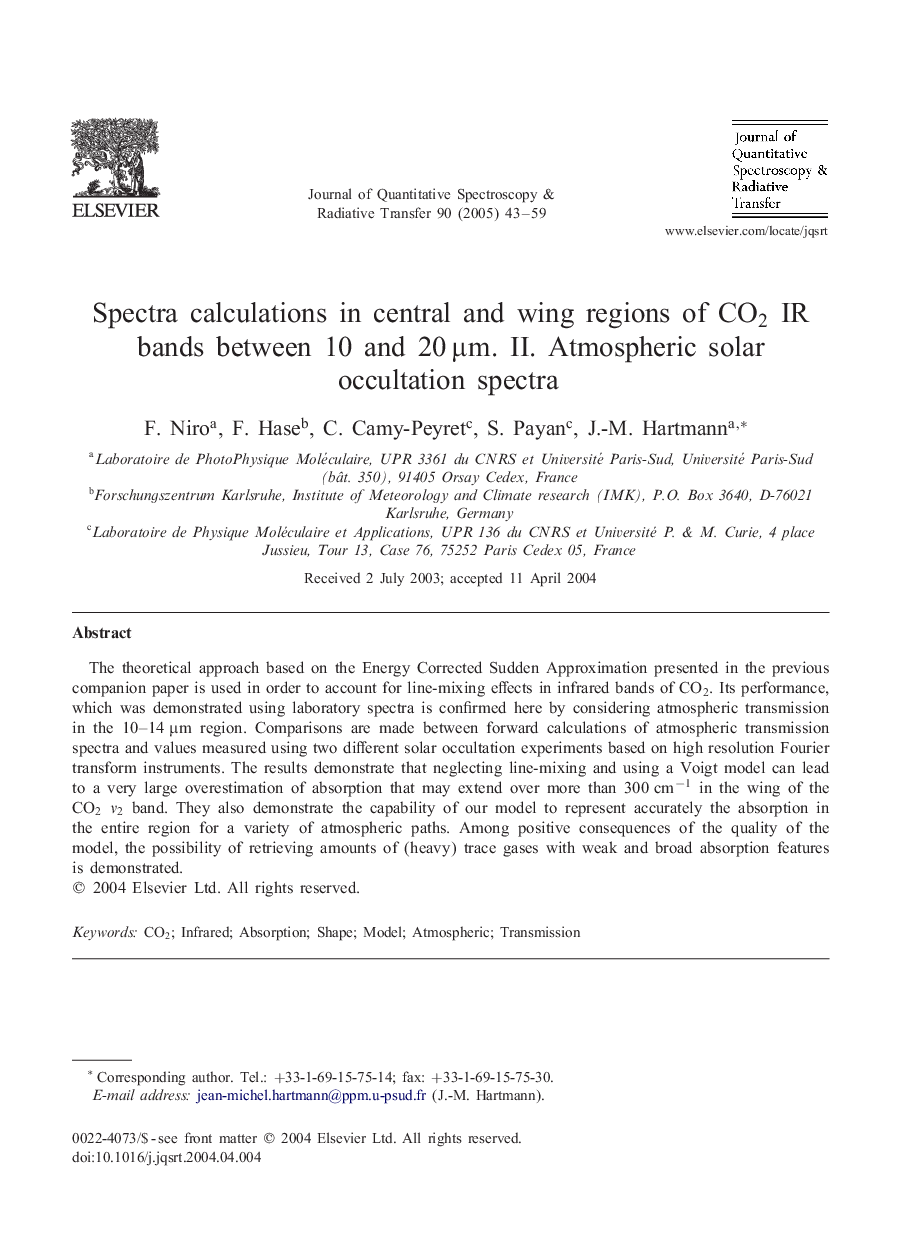| Article ID | Journal | Published Year | Pages | File Type |
|---|---|---|---|---|
| 9599262 | Journal of Quantitative Spectroscopy and Radiative Transfer | 2005 | 17 Pages |
Abstract
The theoretical approach based on the Energy Corrected Sudden Approximation presented in the previous companion paper is used in order to account for line-mixing effects in infrared bands of CO2. Its performance, which was demonstrated using laboratory spectra is confirmed here by considering atmospheric transmission in the 10-14μm region. Comparisons are made between forward calculations of atmospheric transmission spectra and values measured using two different solar occultation experiments based on high resolution Fourier transform instruments. The results demonstrate that neglecting line-mixing and using a Voigt model can lead to a very large overestimation of absorption that may extend over more than 300cmâ1 in the wing of the CO2ν2 band. They also demonstrate the capability of our model to represent accurately the absorption in the entire region for a variety of atmospheric paths. Among positive consequences of the quality of the model, the possibility of retrieving amounts of (heavy) trace gases with weak and broad absorption features is demonstrated.
Related Topics
Physical Sciences and Engineering
Chemistry
Spectroscopy
Authors
F. Niro, F. Hase, C. Camy-Peyret, S. Payan, J.-M. Hartmann,
